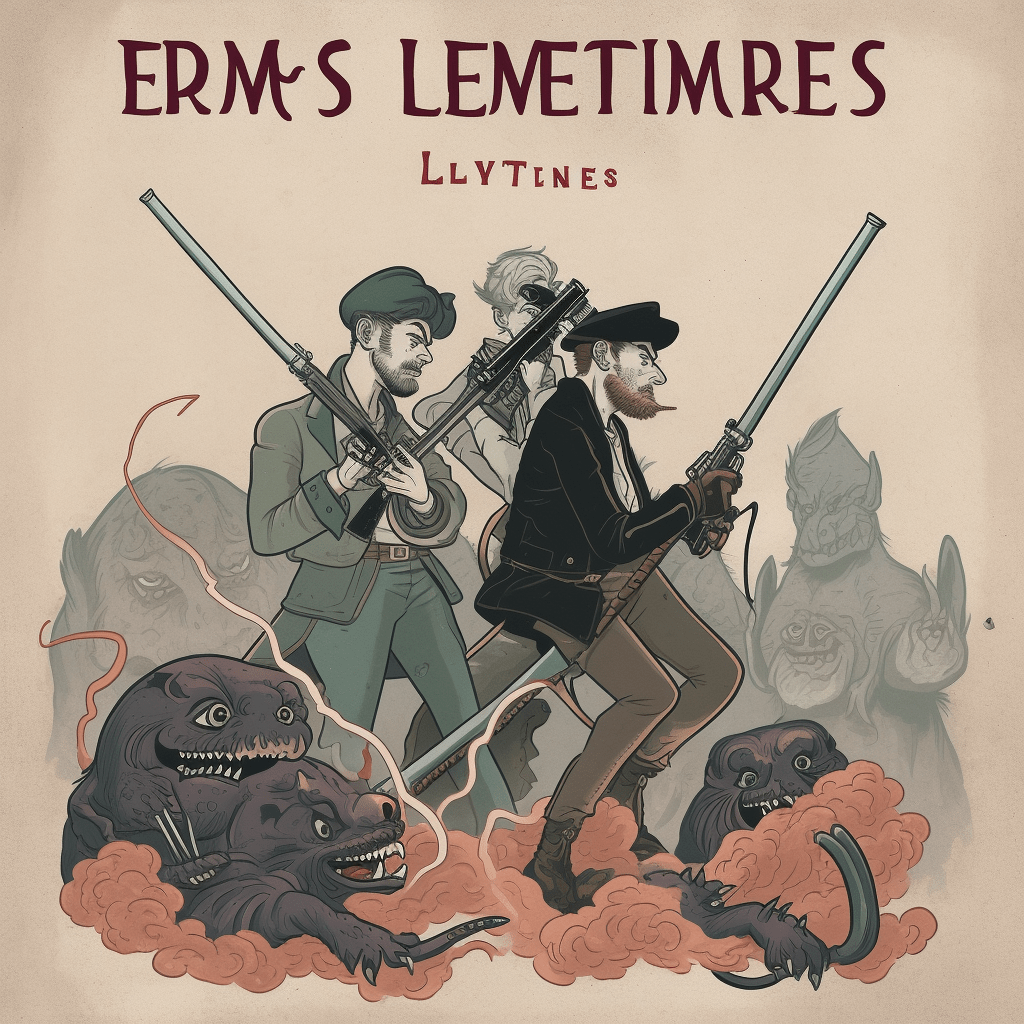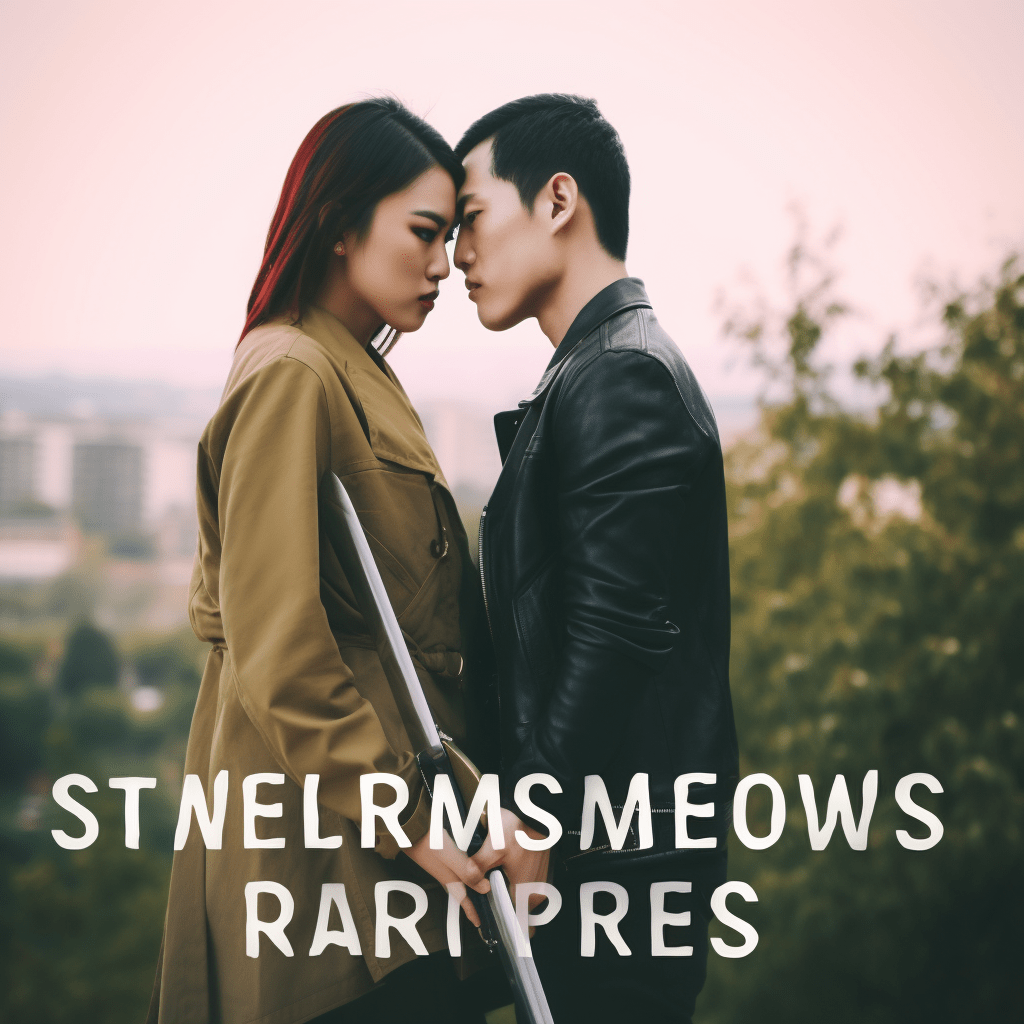Enemies-to-Lovers Trope
The Enemies-to-Lovers Trope is marked by an initial tension between two characters who eventually fall in love. This narrative arc allows for an interesting story dynamic and often results in a satisfying conclusion. The Trope can be used to portray a variety of different relationships, such as a feuding couple or an enemy who becomes a lover. It is also often used to emphasize the power of love, showing that even the most unlikely of couples can find happiness together. The Enemies-to-Lovers Trope is popular in fiction and other forms of media for a variety of reasons. It offers an engaging story dynamic that is often unpredictable and has the potential to lead to an emotional resolution. Additionally, it often offers an inspiring message about the power of love, which is an attractive concept for many readers and viewers.
History
The Enemies-to-Lovers Trope is one of the most beloved tropes in fiction, and it’s easy to understand why. How far back does this trope go? It is believed that the concept of enemies becoming lovers can be traced back to ancient Greece, where it was used in literature and other forms of art. In more recent years, the Enemies-to-Lovers Trope has become increasingly popular in romance novels and films. These stories often feature a male and female protagonist, with the man initially being the antagonist. Through the course of the story, the two characters overcome their differences and form a lasting relationship. The trope is used to explore character development, showing how love can triumph over even the most unlikely of circumstances.
Popularity
The dynamic of conflict, romance and drama that this trope creates makes it appealing to viewers, and its influence often reflects cultural values and norms. Audiences are invested in the characters and the story, eagerly watching to see how their relationship develops.
There is something captivating and enchanting about the idea of two people from opposing sides coming together in love.
The enemies-to-lovers trope has become a staple of modern fiction, and its popularity is a testament to its effectiveness.
Examples
The enemies-to-lovers trope has become a timeless classic in modern fiction. Why? Because it captures the idea of two people from opposing sides coming together in love, and the dramatic tension that comes with it. From Romeo and Juliet to The Lion King, this trope has been used in countless stories and movies, and each one captures the audience’s attention in a unique way.
Take Romeo and Juliet, for example. The two star-crossed lovers are brought together by their forbidden love, despite being from two feuding families. The tension between them is palpable.
The Lion King also uses this trope in a different way. Simba and Nala are both cubs from rival lion prides, and their love blossoms as they both learn and grow from each other. The forbidden nature of their relationship gives it an extra level of tension and excitement.
Pride and Prejudice is another great example of the enemies-to-lovers trope. Mr. Darcy and Elizabeth Bennett both have strong personalities and differing backgrounds, yet their love story is compelling and heartwarming.
Finally, in La La Land, Mia and Sebastian start out as rivals but eventually fall in love with each other. This story follows a classic enemies-to-lovers trope, and the audience is drawn in by their dramatic and passionate relationship.
Romeo and Juliet
The enemies-to-lovers trope is a staple of romance fiction, especially in the world of Shakespeare. Romeo and Juliet is a perfect example of a timeless story that has endured for centuries.
The idea of two characters who start off as enemies and eventually fall in love is one that resonates with readers.
It is a powerful tool for authors to explore all the nuances and complexities of relationships in a captivating way.
The conflict and tension between the two characters draws readers in and makes them root for the couple in the end.
Romeo and Juliet is a classic example of how two very different people can come together, despite their differences, and make something beautiful.

Beauty and the Beast
The classic story is a testament to the power of love, and the possibility of redemption. No matter how dark or desperate the situation may be, hope remains.
It is easy to see why the enemies-to-lovers trope is so powerful. Its captivating nature draws readers in and keeps them hooked.
Cinderella
We can see the powerful and captivating nature of the enemies-to-lovers trope in the classic Cinderella story. The prince and Cinderella initially have a hostile relationship, likely due to the prince’s initial opinion of Cinderella as nothing more than a lowly maidservant.
Despite this, the prince is drawn to Cinderella for her pure heart and kind spirit, which he slowly comes to appreciate over time. This is a typical element of the enemies-to-lovers trope, as two individuals with opposing views come together.
They must overcome their differences in order to find common ground. Love can be a powerful force, capable of overcoming any obstacle, no matter how dark or desperate the situation may seem.
Analysis
We all know the classic “enemies-to-lovers” trope from literature, a story of two characters who start off as enemies but eventually fall in love. This trope has been used in stories for centuries, and it is still popular today. So why is the romance between enemies trope so popular? One reason is that it provides a sense of conflict and tension throughout the story. As the two characters come to terms with their differences, they are forced to confront their own prejudices and preconceived notions. This creates a dramatic arc that is sure to keep readers engaged. The trope also allows for the exploration of themes such as forgiveness, redemption, and understanding. In many stories, these themes are explored through the changing relationship between the two characters. By exploring these themes, readers are able to gain a better understanding of human relationships and how different perspectives can be reconciled. The romance between enemies trope also provides a great opportunity for character development. As the two characters learn more about each other and how to work together, they are able to grow and evolve. This development can be very satisfying for readers, as they watch the two characters grow and find common ground. Finally, the trope can be used to explore a variety of different genres and settings. In some stories, the enemies are from different cultures or backgrounds, which creates a great opportunity for world-building and exploring different cultures. In other stories, the enemies may be from different walks of life, which can be used to explore the complexities of class dynamics.Theme
The enemies-to-lovers trope is one of the oldest and most popular romance tropes in literature. It’s a classic story of two characters starting off as enemies, but eventually falling in love, a theme which has been used for centuries. The trope provides a sense of conflict and tension throughout the story as the two characters confront their own prejudices, making for an exciting and engaging narrative. The theme of love conquering all is a powerful one, and it resonates deeply in this trope. As the two characters learn more about each other and how to work together, they become closer and their love eventually prevails over any animosity. Other themes commonly found in this trope include forgiveness, redemption, and understanding. Through the changing relationship between the two characters, readers can gain insight into the complexities of human relationships and how different perspectives can be reconciled. Additionally, the trope can be used to explore a variety of different genres and settings, providing readers with an opportunity to explore different cultures and class dynamics. Ultimately, the enemies-to-lovers trope conveys a powerful message of love, hope, and understanding. It is a reminder that even the most difficult of obstacles can be overcome with love, and that we should all strive to understand each other and embrace our differences.
Character Dynamics
This enemies-to-lovers trope has been a mainstay of literature for centuries, as it portrays the powerful idea that love can conquer any obstacle. The dynamics of this type of relationship between two characters is one of the most fascinating aspects of the trope. It begins with the two characters being enemies, with the animosity between them forming a strong bond of tension.
As they get to know each other, they learn more and more about each other and become more accepting of one another. The development of the relationship between enemies-turned-lovers often includes conflicts due to their differing pasts. As the two characters struggle to reconcile their differences, they are forced to confront their own prejudices and preconceived notions about each other.
This can create a great deal of tension and conflict between them, as they strive to find common ground and work together to build a successful relationship. The chemistry between the two characters is also an important factor in their relationship. Despite their animosity, the two characters often feel a strong connection that helps to move their relationship forward.
This chemistry can be physical or emotional, but it is an essential part of the enemies-to-lovers trope and helps to create a compelling story. Finally, the characters must ultimately resolve their differences to form a successful relationship. This is often done through understanding and forgiveness, as both characters learn to accept and appreciate each other’s differences.
Conflict
At the core of the foes to sweetheart trope is the idea that two characters can overcome their differences and develop a strong bond of mutual understanding and respect. Conflict helps to create this bond by pushing the two characters to confront their own prejudices and preconceived notions about one another.
The tension between the two characters often leads to a strong chemistry between them, which in turn helps to propel the relationship forward. Conflict also serves as a catalyst for the eventual transformation of these characters from enemies to sweethearts.
It forces them to work together to find common ground and build a successful relationship. The resolution of this conflict gives readers a sense of hope and understanding in the face of adversity. When the two characters come to a mutual understanding, their love can finally prevail.
Conclusion
When it comes to the beloved enemies-becoming-lovers trope, it is easy to see why it has gained such a lasting popularity. From classic works of literature to modern television series, this trope has evolved with time and culture. At its roots, this trope is driven by the conflict between two characters that creates a tension that must be resolved in order for the relationship to develop. Conflict helps to create a bond between the two characters by pushing them to confront their own prejudices and preconceived notions about one another.
It also serves as a catalyst for their eventual transformation from enemies to sweethearts. The impact of this trope in popular culture cannot be overstated. It has been a source of inspiration for countless works of literature, movies, and television shows. It gives viewers a sense of hope and understanding in the face of adversity.
Its resolution is often the most rewarding part of the story. We can see it in classic stories such as Romeo and Juliet, as well as modern adaptations like The Princess Bride.
FAQs
What is the Enemies-to-Lovers Trope?
The Enemies-to-Lovers Trope can be seen as an allegory for the human condition, as it shows how two people, who are initially at odds with each other, can come together and form a meaningful connection. Additionally, this trope can be seen as a way to explore themes of identity and power dynamics. Some of the advantages of this trope include its ability to create tension, suspense, and intrigue, as well as its potential to bring a sense of hope and understanding in the face of adversity.
However, it is important to note that the Enemies-to-Lovers Trope can also be seen as a source of unrealistic expectations for relationships, as it often fails to address the complexity of real-world relationships. It is also important to note that this trope is often used as a form of escapism, as it can provide an idealized version of relationships that may not be achievable in reality.
Overall, the Enemies-to-Lovers Trope is a popular trope that has been used in literature for centuries and is still used in modern media. It has the potential to provide an entertaining narrative, as well as explore themes of identity, power dynamics, and the human condition.
However, it is important to remember that it should not be seen as a source of unrealistic expectations for relationships. It is ultimately up to the viewer or reader to decide whether or not this trope is beneficial or detrimental to their own understanding of relationships.
How did this trope become popular?
We’ve all heard of the Enemies-to-Lovers trope – the idea that two characters who initially dislike each other, eventually develop a romantic relationship. The earliest example of this trope can be found in the classic story of Romeo and Juliet. Here, two people from opposing families fall in love, despite the social prejudices and expectations of their respective families. This story has been reinterpreted and adapted multiple times, showing that it has been a popular trope for centuries. More recently, this trope has become even more popular due to the rise of social and cultural trends. From the rise of social media, to the prevalence of romantic comedies, the Enemies-to-Lovers trope has become a popular trope in modern media. This trope has not only become more visible in the media, but it has also become more socially accepted due to the changing norms of relationships. But why is this trope so appealing? On a psychological level, the Enemies-to-Lovers trope allows viewers to explore themes of identity, power dynamics, and the human condition. It offers viewers a sense of hope and understanding in the face of adversity and can also provide an entertaining narrative. Overall, the Enemies-to-Lovers Trope is a popular trope that has been used in literature for centuries and is still used in modern media. It has the potential to provide an entertaining narrative, as well as explore themes of identity, power dynamics, and the human condition.Are there any modern examples?
The Enemies-to-Lovers trope appeals to viewers on a psychological level, exploring themes of identity, power dynamics, and the human condition. It provides an escape from reality and a sense of hope in the face of adversity, offering an entertaining narrative that many viewers can identify with.
So why is the Enemies-to-Lovers trope so popular? It offers viewers an escape from reality, as well as an entertaining narrative that explores themes of identity, power dynamics, and the human condition. But it is important to remember that this trope should not be seen as a source of unrealistic expectations for relationships.
What is the main theme of this trope?
At its core, the trope focuses on the theme of two characters who are initially enemies but eventually grow to fall in love. It delves into the psychological aspects of human relationships, exploring the idea of how two strangers can form a connection and move past their differences. Viewers find it an appealing option for escape from reality, as well as a narrative that many can identify with. It offers an insight into the complexities of human emotions and how they can shape relationships. It is full of surprises and unexpected turns that make it exciting to watch. It also provides an opportunity to look at how different people can come together, and how two people from different worlds can ultimately find a way to connect. The trope can be seen as a reflection of real-life relationships, and it offers a unique way of looking at how two people can come together in spite of their differences. It also serves as a reminder that people can find love and connection even in the face of adversity.v. What makes this trope so interesting?
The trope focuses on two characters that are initially enemies but develop a romantic relationship. It delves deep into human psychology, exploring the idea of how two strangers can form a connection and move past their differences.
The transformation of enemies to lovers adds an extra layer of excitement and complexity to the narrative. Viewers are able to watch the characters navigate their developing relationship, full of tension and emotion.
Ultimately, they overcome their differences and fall in love, providing a deeply rewarding experience.

